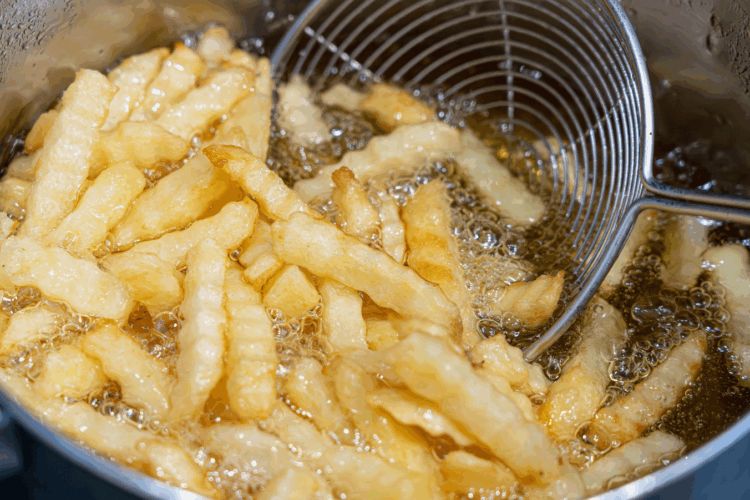Back in 2021, I was shocked to learn just how many additional ingredients are in our food products, principally to increase shelf life, to construct a flavour palette and to reduce overall food costs to consumers. To top it all off, all the vegetable oils that we were told were healthy, turned out not to be so healthy. My thoughts were it’s easy to get rid of the food additives and colouring agents, but what about the oils? This is where beef tallow french fries come in.
Vegetable Oils and Long Known Concerns with Little Awareness
Vegetable oils, often promoted as “heart-healthy,” come with a host of problems when used in high-heat cooking and frying. They are rich in omega-6 fatty acids, which, when consumed excessively, can disrupt the delicate omega-3 to omega-6 balance in our diet. This imbalance has been linked to chronic inflammation, which leads to other health complications in time.
Additionally, vegetable oils such as canola, soybean, and sunflower are prone to forming harmful byproducts when heated. One of these is HNE (4-hydroxynonenal), a toxic compound that forms when polyunsaturated fats degrade at high temperatures. Frying oil is often used multiple times before being discarded in restaurants, and I’m sure everyone reading this of parenting age has questioned when the last time the oil at a restaurant was changed. Studies have shown this going back decades. HNE and related compounds are formed from the oxidation of linoleic acids (i.e., omega-6), and reports link it to several diseases like atherosclerosis, stroke, Parkinson’s, Alzheimer’s, Huntington’s, liver disease, and even cancer.
Another concern is acrylamide, a chemical that forms when starchy foods are cooked at high temperatures, particularly oven-baked and fried foods. Acrylamide has been shown to cause cancer in animals at very high doses. International food safety authorities have concluded that acrylamide is a human health concern, and it is classified as a “probable” or “reasonably anticipated” human carcinogen by several major organizations. While acrylamide occurs to some extent in all fried foods (i.e., coffee, chips, cereals), the use of animal fats like beef tallow can help mitigate its formation compared to some vegetable oils, thanks to their stability under heat. Research has shown that cooking with lard and ghee, for instance, resulted in a significant reduction in acrylamide formation compared to certain vegetable oils. What I found really interesting is that we’ve known about acrylamide formation in our fried and oven-baked foods for over twenty years!
The Health Benefits of Beef Tallow
Beef tallow, by contrast, is a saturated fat. While saturated fats have been unfairly demonized for decades, recent research paints a more balanced picture. Saturated fats are stable at high temperatures, meaning they produce fewer harmful byproducts like HNE—making it perfect for frying French fries. Additionally, animal fats like tallow have been part of the human diet for centuries, offering a nutritional profile rich in fat-soluble vitamins and a natural balance of fatty acids.
Unlike vegetable oils, which skew heavily toward omega-6 fatty acids, beef tallow has a more balanced profile, reducing the likelihood of inflammatory imbalances.
The Flavor Factor
Health is important, but let’s not forget the joy of eating. Beef tallow offers a rich, savory depth that vegetable oils simply can’t replicate. It lends fries a golden crispness and a full-bodied flavor that harkens back to the golden era of cooking, when taste reigned supreme.
This flavor isn’t just nostalgic—it’s authentic. Tallow has been a staple in kitchens for generations, used by cultures around the world to create some of the most beloved dishes. It’s a culinary treasure that adds more than just calories; it adds character. It’s so much so, that I’ve previously only found beef tallow fries at a handful of fine dining restaurants.
Bridging Health and Flavor
While the use of animal fats like tallow may not align with vegetarian preferences, it’s worth noting that my choice is about finding the best alternative to seed oils and offering the best product possible. The fries are made with simple, whole ingredients—potatoes, beef tallow, and sea salt—free from the industrial processing often associated with seed oils. If you’re not aware of how certain vegetable oils are made, perhaps a quick search will be enlightening.
For food lovers, the choice of beef tallow represents a return to real cooking. For those seeking a healthier indulgence, it’s a step toward enjoying comfort food without compromising on quality or safety. What I’ve found most interesting is that many people have never tasted the wonderful flavors of food made with beef tallow.
How Great Would It Be for the French Fry?
When creating the ultimate French fry, I knew it wasn’t just about crispiness or taste—it was about crafting a fry that celebrates the best of flavor, history, and health. One decision that set my fries apart was choosing beef tallow over vegetable oils. This wasn’t a trendy move; it was a deliberate choice rooted in science, tradition, and culinary excellence.
In Conclusion
Choosing beef tallow for my French fries was about more than just making them taste great—it was about creating a product that respects our health, honors culinary tradition, and delights the palate. Whether you’re here for the science, the nostalgia, or just the joy of biting into the perfect fry, I hope you’ll taste the difference and join me in celebrating a timeless approach to food.

